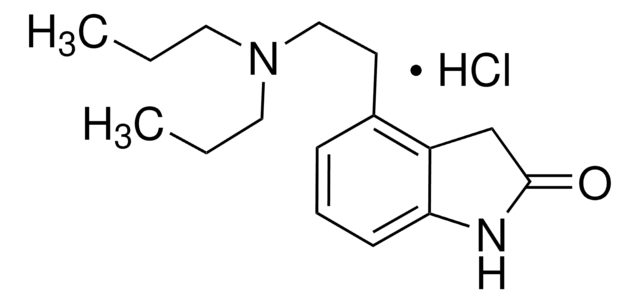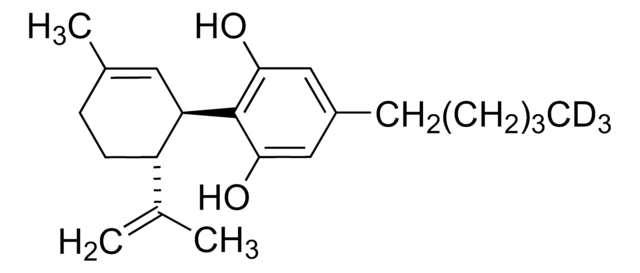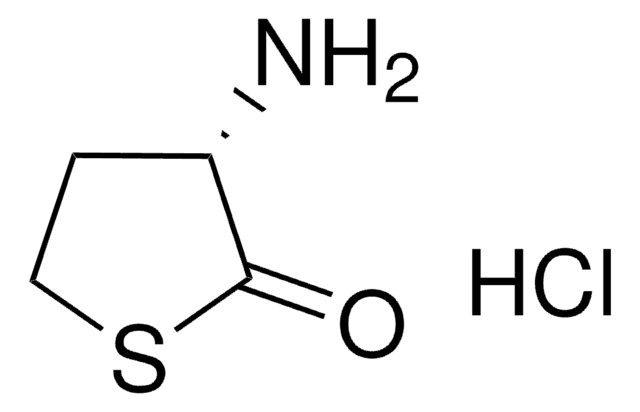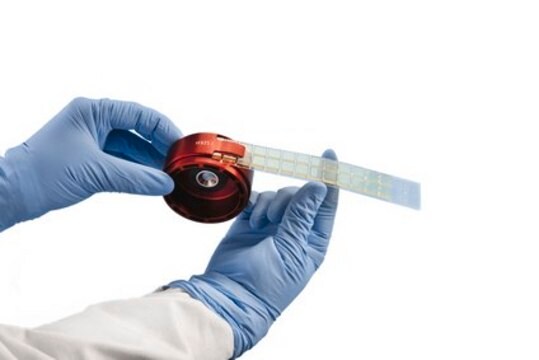C0246
Cabergoline
≥98% (HPLC)
Synonyme(s) :
1-Ethyl-3-(3′-dimethylaminopropyl)-3-(6′-allylergoline-8′β-carbonyl)urea, 1-[(6-Allylergoline-8β-yl)carbonyl]-1-[3-(dimethylamino)-propyl]-3-ethylurea, Cabaser, Dostinex, FCE-21336
About This Item
Produits recommandés
Niveau de qualité
Pureté
≥98% (HPLC)
Forme
powder
Activité optique
[α]/D −63 to −74°, c = 0.5 in dichloromethane
Solubilité
DMSO: ≥10 mg/mL
Auteur
Johnson & Johnson
Température de stockage
2-8°C
Chaîne SMILES
CCNC(=O)N(CCCN(C)C)C(=O)[C@@H]1C[C@H]2[C@@H](Cc3c[nH]c4cccc2c34)N(CC=C)C1
InChI
1S/C26H37N5O2/c1-5-11-30-17-19(25(32)31(26(33)27-6-2)13-8-12-29(3)4)14-21-20-9-7-10-22-24(20)18(16-28-22)15-23(21)30/h5,7,9-10,16,19,21,23,28H,1,6,8,11-15,17H2,2-4H3,(H,27,33)/t19-,21-,23-/m1/s1
Clé InChI
KORNTPPJEAJQIU-KJXAQDMKSA-N
Informations sur le gène
human ... DRD2(1813)
Vous recherchez des produits similaires ? Visite Guide de comparaison des produits
Actions biochimiques/physiologiques
Caractéristiques et avantages
Mention d'avertissement
Warning
Mentions de danger
Conseils de prudence
Classification des risques
Acute Tox. 4 Oral - Lact.
Code de la classe de stockage
11 - Combustible Solids
Classe de danger pour l'eau (WGK)
WGK 3
Point d'éclair (°F)
Not applicable
Point d'éclair (°C)
Not applicable
Certificats d'analyse (COA)
Recherchez un Certificats d'analyse (COA) en saisissant le numéro de lot du produit. Les numéros de lot figurent sur l'étiquette du produit après les mots "Lot" ou "Batch".
Déjà en possession de ce produit ?
Retrouvez la documentation relative aux produits que vous avez récemment achetés dans la Bibliothèque de documents.
Notre équipe de scientifiques dispose d'une expérience dans tous les secteurs de la recherche, notamment en sciences de la vie, science des matériaux, synthèse chimique, chromatographie, analyse et dans de nombreux autres domaines..
Contacter notre Service technique








